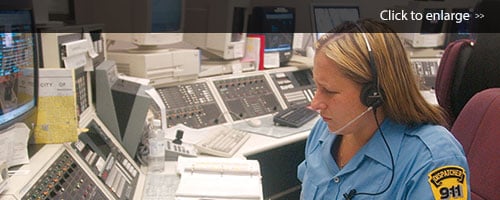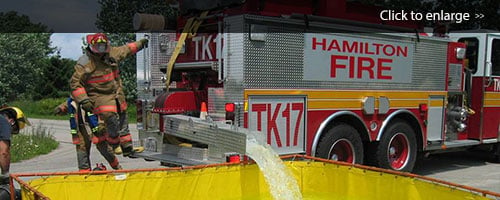Fire remains one of the leading causes of property loss. A community’s efforts to mitigate those losses before, during, or after a fire are of great importance to insurers. For more than 30 years, we’ve used our Fire Suppression Rating Schedule (FSRS) to review the firefighting capabilities of individual communities — helping to provide the insurance industry with information on a community’s ability to suppress and limit fire losses. The FSRS develops a numerical grading, ISO’s Public Protection Classification (PPC®), to help insurers differentiate the varying levels of fire protection. Class 1 represents the best public protection, and Class 10 indicates no recognized protection.
The Revised Fire Suppression Rating Schedule
ISO filed a revised schedule in December 2012 with changes that focus on areas that have a proven effect on fire suppression and prevention, as well as revisions that align the schedule’s requirements with those of nationally accepted standards. The schedule now recognizes proactive efforts to reduce fire risk and frequency.
The revised FSRS makes increased reference to the national consensus standards of the National Fire Protection Association (NFPA), American Water Works Association (AWWA), and Association of Public-Safety Communications Officials International (APCO). Using feedback from those organizations and many other industry associations, we revised our PPC evaluation to make it more accurately reflect modern fire prevention and suppression capabilities. By incorporating more direct references to national consensus standards, we’re reinforcing that ISO doesn’t just write standards but uses recognized fire suppression and prevention practices as the basis for our PPC evaluations.
The new schedule continues to evaluate three major categories of fire suppression: fire department, emergency communications, and water supply. In addition, it includes a new Community Risk Reduction section that recognizes community efforts to reduce losses through fire prevention, public fire safety education, and fire investigation. The addition of the new risk reduction section represents a major shift in emphasis in the FSRS, giving incentives to communities that strive to reduce fire severity proactively through a structured program of fire prevention activities. Examples of fire prevention programs include wildland-urban interface ordinances, certificate of occupancy inspections, and inspections of fire prevention equipment.
“The revised FSRS continues to provide incentives to communities to strengthen their public fire protection — as fire is one of our major property insurance perils,” said Bill Raichle, president of Verisk Insurance Solutions – Commercial Property. “The revision reflects current trends in fire protection, credits a community’s fire prevention and fire protection capabilities in a measured, analytical way, and improves the predictive nature of the evaluation process.”
There’s been growing involvement in community efforts to limit losses before they happen, led largely by fire departments and their personnel. It’s not easy to quantify the efforts made toward fire prevention and fire safety education, but there’s enough anecdotal evidence to indicate that the more done to prevent a fire, the less likely a fire will happen or that it will be a major event.
Here are just some of the FSRS revisions we’ve made:
Fire Department Section
The Fire Department section recognizes fire departments that use various methods to solve the critical issues of economic constraints and firefighter recruitment and retention. One way that we’ve addressed those issues is through enhanced recognition for automatic-aid personnel and equipment, including an increase in the automatic-aid factor for fire departments that operate with common fireground procedures. In addition, we now offer credit to fire departments that develop and use standard operating procedures and incident management systems. We’ll also consider a fire department’s deployment analysis, based on NFPA 1710, as a potential alternative to our traditional road-mile distribution study. That study established optimal distances for standard response districts around each fire station — 1.5 road miles for an engine company and 2.5 road miles for a ladder service company. In conjunction with that change, we’ve shifted emphasis from the number of apparatus and equipment carried to the proper deployment of those resources by adjusting point totals for the relevant sections.
We’ve modified our apparatus equipment lists to include only items specified in NFPA 1901. That change will more closely align the schedule with consensus standards and allow additional flexibility to revise our lists if there are significant changes to NFPA 1901. Many other areas of the fire department evaluation make increased reference to consensus standards, particularly in fire department training, where credit will now be available for officer certification. And the evaluation of pre-incident planning is now based on annual rather than semiannual inspections.
Some of the changes directly affect the minimum facilities evaluated by the FSRS. By referencing NFPA 1901, we’ve increased minimum pump capacities for apparatus needed to qualify for minimal recognition under Class 9 and separately for Classes 1 through 8B to follow NFPA requirements more closely. We’ve also placed additional emphasis on firefighter safety, such as personal protective equipment and increased recognition for driver/operator training, with the realization that personnel can carry out successful fire suppression operations only if they’re able to avoid accidents and injury.
Emergency Communications Section
One of the most rapidly changing areas in fire suppression has been in communications. The revised FSRS — referencing APCO standards — reflects current technology by incorporating major revisions to this section, with a pronounced shift in emphasis from hardware, such as phone lines and radio equipment, to a more performance-oriented evaluation. The element of time is critical in allowing firefighters to attack a fire in its early stages, and the revised schedule places greater value on a communication center’s ability to answer and process emergency calls in time frames specified by the NFPA. We’ve also eliminated evaluation of phone lines and phone listings; instead, we’ll consider enhanced 911, wireless technology, VoIP, CAD, and GIS capabilities.
Water Supply Section
In the Water Supply section, the FSRS now includes specific credit for communities, water utilities, or fire departments that enhance their understanding of a water system through periodic fire hydrant flow testing that meets NFPA and AWWA standards. The revised schedule also includes additional credit for flow through a single hydrant from a maximum of 1,000 gpm to 1,500 gpm, in accordance with AWWA.
Credit Point Changes
While the total credit points for the existing major categories remain unchanged, we’ve increased or decreased the point weights for some sections.
The total credit points still are:
- Fire Department: 50+ points
- Emergency Communications (formerly “Fire Alarm”): 10 points
- Water Supply: 40 points
The Community Risk Reduction section has a weight of 5.5 points, resulting in a revised 105.5+ available points. The inclusion of the new section with its extra points allows recognition of communities that include effective fire prevention practices without applying undue penalty for those that haven’t yet adopted such measures.
An important change throughout the revised FSRS is the way we credit record keeping. When no documentation exists to substantiate an item under review, we won’t give credit for the section unless otherwise stated in the schedule. That’s essentially a “no records, no credit” approach. We’ve also established a new limit of 75 percent of the credit points possible when only partial documentation of an item exists. We implemented those changes to emphasize the importance of proper record keeping.
Ongoing Evaluation
The revised FSRS was an effort that took several years and involved a variety of stakeholders in organizations that deal with water, fire, and emergency communications; federal, state, and local officials; insurance regulators; and insurers from across the country. But the introduction of the revised schedule is only the beginning and won’t be a once-in-a-lifetime event. We’re making a commitment to refine and revise the FSRS every three to five years. During that period, we’ll collect data regarding the relationships between the items in the schedule and their effect on fire loss. An evaluation of a community’s firefighting ability is an ongoing process.
“Our top insurer customers continue to tell us that the FSRS and PPC program help them predict loss and underwrite more accurately. Statistical data on insurance losses demonstrates the relationship between better fire protection and lower fire losses,” said Robert Andrews, vice president, ISO Community Hazard Mitigation. “By securing lower fire insurance premiums for communities with better fire protection, our programs provide incentives for communities that choose to improve their firefighting services.”
Be sure to view our web seminar on ISO's PPC program and FSRS updates.



